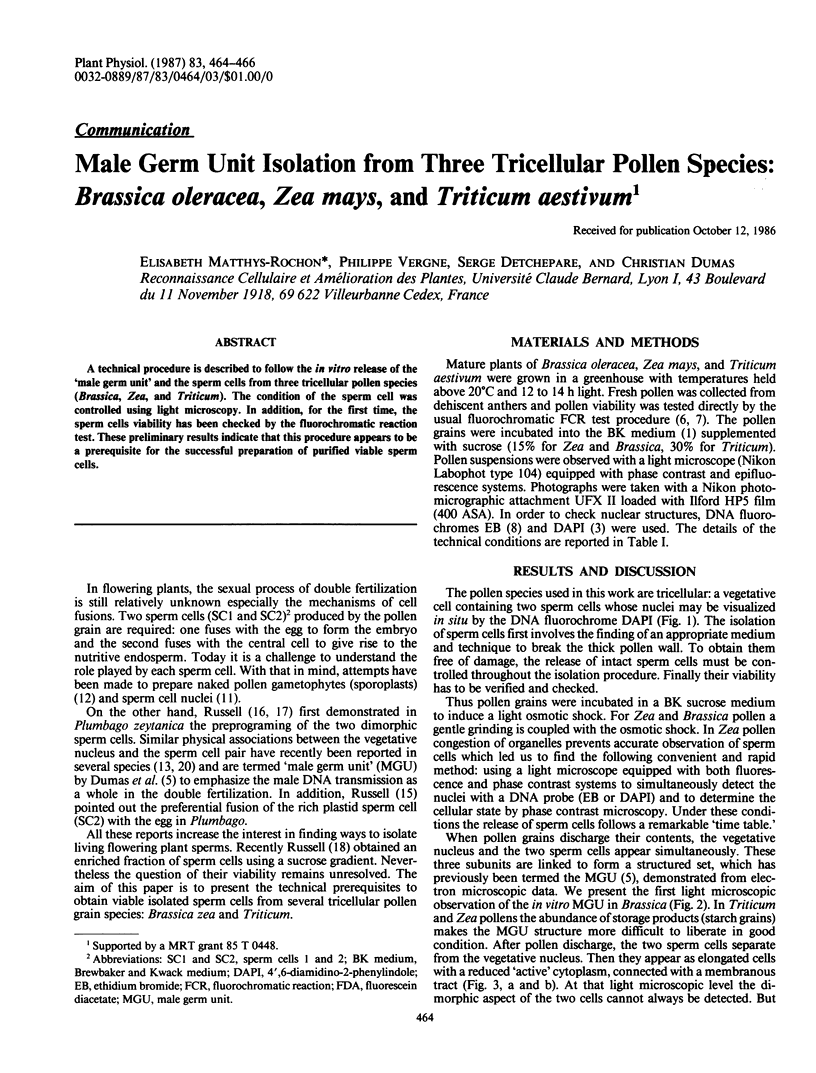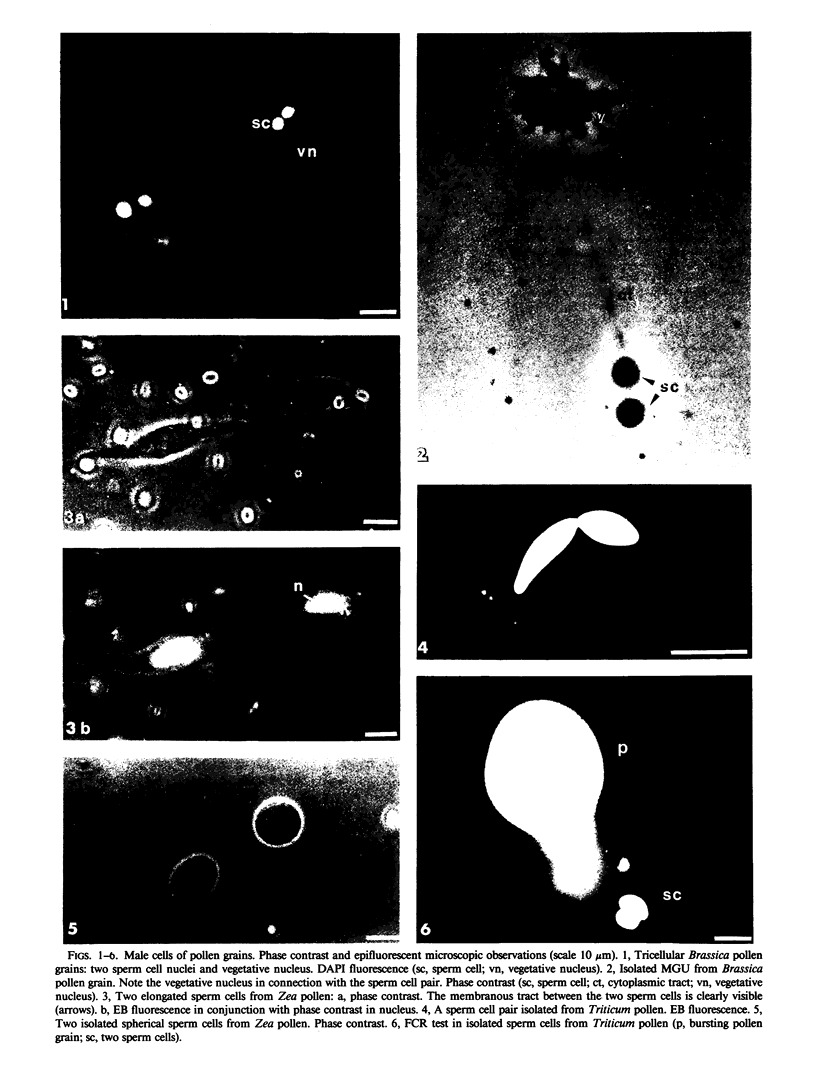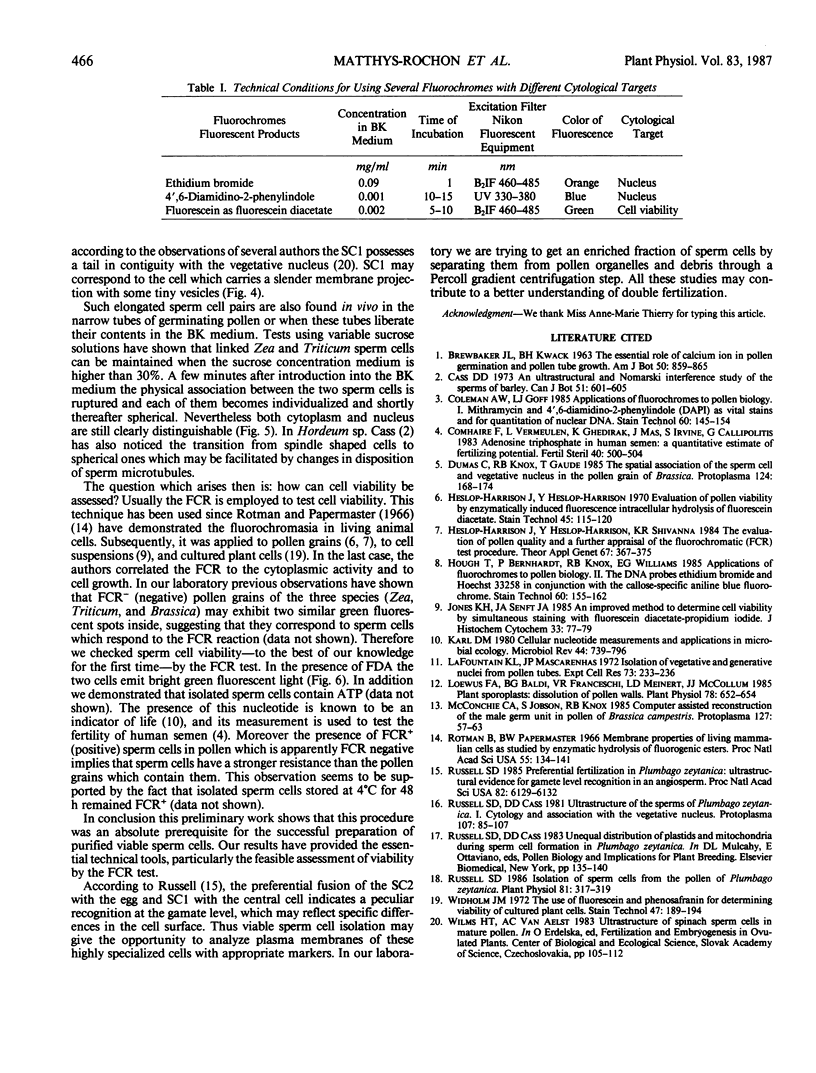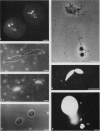Abstract
A technical procedure is described to follow the in vitro release of the `male germ unit' and the sperm cells from three tricellular pollen species (Brassica, Zea, and Triticum). The condition of the sperm cell was controlled using light microscopy. In addition, for the first time, the sperm cells viability has been checked by the fluorochromatic reaction test. These preliminary results indicate that this procedure appears to be a prerequisite for the successful preparation of purified viable sperm cells.
Full text
PDF


Images in this article
Selected References
These references are in PubMed. This may not be the complete list of references from this article.
- Coleman A. W., Goff L. J. Applications of fluorochromes to pollen biology. I. Mithramycin and 4',6-diamidino-2-phenylindole (DAPI) as vital stains and for quantitation of nuclear DNA. Stain Technol. 1985 May;60(3):145–154. doi: 10.3109/10520298509113905. [DOI] [PubMed] [Google Scholar]
- Comhaire F., Vermeulen L., Ghedira K., Mas J., Irvine S., Callipolitis G. Adenosine triphosphate in human semen: a quantitative estimate of fertilizing potential. Fertil Steril. 1983 Oct;40(4):500–504. doi: 10.1016/s0015-0282(16)47363-2. [DOI] [PubMed] [Google Scholar]
- Heslop-Harrison J., Heslop-Harrison Y. Evaluation of pollen viability by enzymatically induced fluorescence; intracellular hydrolysis of fluorescein diacetate. Stain Technol. 1970 May;45(3):115–120. doi: 10.3109/10520297009085351. [DOI] [PubMed] [Google Scholar]
- Hough T., Bernhardt P., Knox R. B., Williams E. G. Applications of fluorochromes to pollen biology. II. The DNA probes ethidium bromide and Hoechst 33258 in conjunction with the callose-specific aniline blue fluorochrome. Stain Technol. 1985 May;60(3):155–162. doi: 10.3109/10520298509113906. [DOI] [PubMed] [Google Scholar]
- Jones K. H., Senft J. A. An improved method to determine cell viability by simultaneous staining with fluorescein diacetate-propidium iodide. J Histochem Cytochem. 1985 Jan;33(1):77–79. doi: 10.1177/33.1.2578146. [DOI] [PubMed] [Google Scholar]
- Karl D. M. Cellular nucleotide measurements and applications in microbial ecology. Microbiol Rev. 1980 Dec;44(4):739–796. doi: 10.1128/mr.44.4.739-796.1980. [DOI] [PMC free article] [PubMed] [Google Scholar]
- LaFountain K. L., Mascarenhas J. P. Isolation of vegetative and generative nuclei from pollen tubes. Exp Cell Res. 1972 Jul;73(1):233–236. doi: 10.1016/0014-4827(72)90125-5. [DOI] [PubMed] [Google Scholar]
- Loewus F. A., Baldi B. G., Franceschi V. R., Meinert L. D., McCollum J. J. Pollen sporoplasts: dissolution of pollen walls. Plant Physiol. 1985 Jul;78(3):652–654. doi: 10.1104/pp.78.3.652. [DOI] [PMC free article] [PubMed] [Google Scholar]
- Rotman B., Papermaster B. W. Membrane properties of living mammalian cells as studied by enzymatic hydrolysis of fluorogenic esters. Proc Natl Acad Sci U S A. 1966 Jan;55(1):134–141. doi: 10.1073/pnas.55.1.134. [DOI] [PMC free article] [PubMed] [Google Scholar]
- Russell S. D. Isolation of Sperm Cells from the Pollen of Plumbago zeylanica. Plant Physiol. 1986 May;81(1):317–319. doi: 10.1104/pp.81.1.317. [DOI] [PMC free article] [PubMed] [Google Scholar]
- Russell S. D. Preferential fertilization in Plumbago: Ultrastructural evidence for gamete-level recognition in an angiosperm. Proc Natl Acad Sci U S A. 1985 Sep;82(18):6129–6132. doi: 10.1073/pnas.82.18.6129. [DOI] [PMC free article] [PubMed] [Google Scholar]
- Widholm J. M. The use of fluorescein diacetate and phenosafranine for determining viability of cultured plant cells. Stain Technol. 1972 Jul;47(4):189–194. doi: 10.3109/10520297209116483. [DOI] [PubMed] [Google Scholar]



